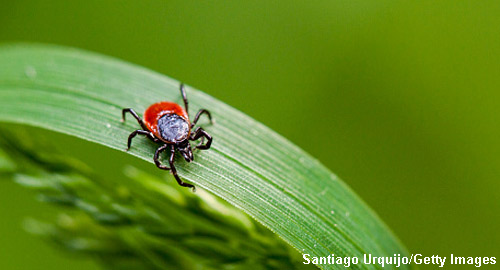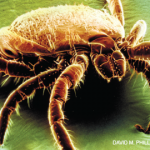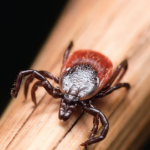 Lyme disease and Lyme arthritis—a late manifestation of the disease—are on the rise across the U.S. and Canada. And rheumatologists in all regions need to be at the ready.
Lyme disease and Lyme arthritis—a late manifestation of the disease—are on the rise across the U.S. and Canada. And rheumatologists in all regions need to be at the ready.
“In endemic areas, rheumatologists and primary care physicians are aware of Lyme arthritis,” says Allen C. Steere, MD, principal investigator within the Massachusetts General Hospital Center for Immunology and Inflammatory Diseases and professor of medicine at Harvard Medical School, Boston. He cautions that physicians in other areas to which the disease is spreading may not yet be aware of this entity. Dr. Steere is recognized internationally as the pioneer in discovering Lyme disease and leading Lyme disease and arthritis research and treatment.
A Growing Problem
Each year, an estimated 300,000 new cases of Lyme disease occur in the U.S., concentrated heavily along the East Coast, from Maine to North Carolina.1 The infection is also found in the Midwest, in Wisconsin, Minnesota and Michigan, and cases occur on the West coast sporadically, primarily in northern California.
Lyme disease is spreading geographically into states contiguous with those previously affected.2 For example, locations in western Pennsylvania are greatly affected now, and the infection is moving into Ohio. In addition, the disease is spreading north to Canadian provinces, Nova Scotia, Dr. Steere notes.3
A Complex History of Evolution
Lyme disease could be the poster child for survival of the fittest. The disease has come back with a vengeance after being nearly wiped out during the European colonization of North America, when deer were hunted to near extinction and forests were felled for farmland in the Northeast. As industry replaced farming in the 20th century, farmland reverted to forest areas, and deer, which were brought to the Northeast, proliferated. These changes, along with other ecological factors, allowed for resurgence in tick vector populations that have provided a breeding ground for the Lyme disease bacteria Borrelia burgdorferi.4
In 1976, Lyme arthritis was recognized when Dr. Steere and colleagues found a cluster of children with arthritis in Lyme, Conn. This incident led to the description of Lyme arthritis, which was later shown to be caused by a newly recognized tick-borne spirochete named B. burgdorferi.5 Various strains of this organism cause infection in North America, Europe and Asia.
“There is marked strain variation in different geographic locations and even in the same locale, which likely is an important factor in differences in the clinical manifestations of the disease,” Dr. Steere explains. For example, certain strains in the Northeast and Midatlantic states are particularly virulent and arthritogenic.6
Best Practices in Lyme Arthritis Treatment
“Humans are casual bystanders affected by this enzootic disease when bitten by an infected tick,” Dr. Steere says. In an interview, he shares four important strategies to care for patients with Lyme arthritis.
1. Know what to look for: Lyme arthritis is usually characterized by swelling and pain in one or a few large joints, especially the knee. However, small joints, bursae or tendons are sometimes affected, but usually only in one or two locations, Dr. Steere explains.
The major way to confirm the diagnosis of Lyme arthritis is by serologic testing using a two-test approach of ELISA and Western blot. Patients with Lyme arthritis have high IgG antibody responses to B. burgdorferi, as determined by ELISA, with expansion of the response to many spirochetal proteins, as shown by Western blotting. PCR testing for B. burgdorferi DNA in joint fluid is an optional test to help confirm the diagnosis. This test is positive in about 70% of patients with Lyme arthritis prior to antibiotic therapy.
2. Apply a standardized treatment algorithm: “We follow an algorithm for the treatment of Lyme arthritis,” Dr. Steere says.7 This treatment starts with oral doxycycline or amoxicillin for four weeks. “If the joint remains quite swollen, we treat with IV antibiotic therapy, usually ceftriaxone, for four weeks. If a proliferative synovitis persists or worsens after both oral and IV antibiotic therapy, we then give disease-modifying antirheumatic drug therapy.”
He says this algorithm is important to follow for all patients in an effort to treat the infection adequately, but change to anti-inflammatory therapy if the arthritis persists after oral and IV antibiotics. In such patients, persistent synovitis appears to be due to immune-mediated inflammation, with autoimmune features, that persists after spirochetal killing with antibiotic therapy.
3. Follow established testing protocols to track treatment response: After spirochetal killing occurs, Dr. Steere says the IgG antibody titer to B. burgdorferi declines gradually over a period of months. However, the ELISA test usually remains positive for years, albeit at lower titer. The Western blot, a non-quantitative test, does not change much after treatment. Accurate determination of the decline in titer requires testing longitudinal samples in the same assay, but in most instances, previous samples are not saved. The PCR test may also remain positive for weeks or maybe months after spirochetal eradication.
“There are currently no biomarkers that clearly distinguish the infectious from the post-infectious phase of the illness at the time of transition from one phase to the other. However, there are tests that can help give us clues,” Dr. Steere says.
Example: During infection, joint fluid usually contains a marked predominance of polymorphonuclear (PMN) leukocytes (~90%). In contrast, the percentage of PMNs declines during the post-infectious phase, and the percentages of lymphocytes and monocytes increase. Additionally, patients with post-infectious arthritis have increased frequencies of certain HLA-DR alleles, a TLR1 polymorphism, certain microRNAs and/or immune dysregulation of the CD4+ T effector cell/T regulatory cell ratio. For the most part, tests for these markers are not commercially available.
4. Stay current with emerging research on lyme arthritis treatment: Much of the research conducted in the Steere Laboratory at Massachusetts General Hospital is focused on uncovering mechanisms involved in the pathogenesis of Lyme disease to identify biomarkers of disease activity, develop diagnostic tests and help guide vaccine development.
To better understand the antibody response in Lyme disease, Dr. Steere and his colleagues recently conducted research investigating IgG subclasses of B. burgdorferi antibodies, examining how these responses differ from those of Lyme disease (LD)‐associated autoantibodies. They found that B. burgdorferi antibodies were primarily of the IgG1 and IgG3 subclasses with amounts increasing as the infection progressed. In contrast, LD‐associated autoantibodies were mainly of the IgG2 and IgG4 subclasses. These responses were found primarily in patients either with antibiotic‐refractory or antibiotic‐responsive arthritis, particularly in synovial fluid.8
“Importantly, IgG4 autoantibody levels in synovial fluid correlated directly with the magnitude of obliterative microvascular lesions and fibrosis in the synovial tissue of patients with post-infectious, antibiotic-refractory Lyme arthritis, implying that these antibodies may develop a pathologic phenotype,” he says.
Prevention
When Dr. Steere is not working in the lab to uncover the mysteries of Lyme disease activity, he spends one day each week in clinic caring for patients suffering from Lyme arthritis. He says one important lesson for patients and physicians alike is to take protective measures, such as using insect repellents and doing tick checks to avoid or recognize tick bites that may transmit Lyme disease with the potential to develop into Lyme arthritis.
Carina Stanton is a freelance science journalist in Denver.
References
- Centers for Disease Control and Prevention. Lyme disease statistics: How many people get Lyme disease? 2015 Sept 30.
- Centers for Disease Control and Prevention. Lyme disease: Data and statistics. 2017 Nov 13.
- Government of Canada. Health, Lyme disease: Surveillance of Lyme disease, statistics. 2018 Jul 12.
- Steere AC, Strle F, Wormser GP, et al. Lyme borreliosis. Nat Rev Dis Primers. 2016 Dec 15;2:16090. doi: 10.1038/nrdp.2016.90.
- Steere AC. Malawista SE, Snydman DR, et al. Lyme arthritis: An epidemic of oligoarticular arthritis in children and adults in three connecticut communities. Arthritis Rheum. 1977;20:7–17.
- Strle K, Jones KL, Drouin EE, et al. Borrelia burgdorferi RST1 (OspC Type A) genotype is associated with greater inflammation and more severe lyme disease. Am J Pathol. 2011 Jun;178(6):2726–2739.
- Steere AC, Angelis SM. Therapy for Lyme arthritis: Strategies for the treatment of antibiotic‐refractory arthritis. Arthritis Rheum. 2006 Oct;54(10):3079–3086.
- Sulka KB, Strle K, Crowley JT, et al. Lyme Disease‐associated IgG4 autoantibodies correlate with synovial pathology in antibiotic‐refractory Lyme arthritis. Arthritis Rheumatol. 2018 May 23. doi: 10.1002/art.40566. [Epub ahead of print]


